Microlearning is an eLearning process that uses small learning units or short-term learning activities and allows students to digest information better. Examples include games, videos, podcasts, infographics, etc.
In this video, Anna talks about creating a course and shares tips on how to do it best and how to choose a platform.
In this article, we’ll uncover the benefits, types, and best practices of microlearning. We’ll also review the best microlearning platforms for you to consider.
10 Benefits of Microlearning
By focusing on small learning units and short-term activities, microlearning allows students to perceive information better compared to multitasking lessons. Learners have the time to study a specific topic in more detail, memorize the information, and successfully use it in the future. There are even more benefits that students and companies can reap after implementing microlearning. They include:
- higher lever of students’ engagement;
- reduced cognitive overload;
- more digestible information;
- easily trackable results;
- cost-effectiveness;
- time-efficiency;
- personalized learning experience;
- opportunity for mobile learning;
- better knowledge retention;
- increased level of course completion.
If applied right, microlearning will bring you the goal you target. However, to achieve the necessary result, you need to choose the types of online lessons that meet your initial purpose. In the next section, we’ll review them in detail so that you can make the right choice.
Join the microlearning revolution on our blog!
7 Types of Microlearning
The effectiveness of your online course depends on the content formats you choose. For instance, if you want to teach your advanced students good pronunciation, you can implement podcasts. However, this strategy might not work with beginners, so you need to find a personal approach. For this purpose, we’ll review different types of microlearning.
- Infographics. Since 90% of data transmitted to the brain is visual, using photos, videos, and infographics in your eLearning process is essential. Infographics visually represent information in a clear, concise, and memorable way. This information is an excellent way to communicate the key points of your extensive training programs.
- Videos. According to statistics, visuals are processed 60,000 times faster than text alone. Unlike print materials, videos provide an engaging sensory experience, allowing students to digest information faster in an interactive way. Video content increases engagement and reduces cognitive overload. Besides being cost-effective, video learning ensures a practical learning experience.
- Podcasts. A podcast is a set of audio episodes focused on a specific topic. These audio episodes are exceptionally useful when learning a new language, and students can listen to these audio materials 24/7 to improve their listening skills. They can come in handy when learners skip classes or don’t understand your text materials but still want to learn. Moreover, listening to podcasts also leaves your students some room for multitasking.
- Gamification. Gamification involves using the elements of a game in the learning process. A teacher, coach, or influencer applies game elements to an educational setting. Using gamification can increase engagement and prevent your students from getting bored. Duolingo is an excellent example of the wise use of gamification. When learners use the app, they feel like playing a game. This language learning app helps people learn new words without overburdening them with tons of new information.
- Simulations. With simulations, you can put your students in scenarios where they should act to solve problems. The main aim is to make learners use the knowledge and skills they have received so far. The instructor creates an appropriate environment so that people can obtain hands-on experience.
- Static resources. Although PDFs and eBooks aren’t too engaging and interactive, they are still in great demand among learners. These sources of information provide students with quality materials and well-researched answers to their questions. After reading PDFs and eBooks, students can understand the topic from different perspectives.
- Mobile apps. Mobile apps can be both entertaining and useful. There are apps for children and adults, college and home learning, reading, and learning languages. They can be presented in the form of a game or academy and help people master their knowledge and skills.
Using videos, photos, infographics, and other formats of content speeds up and improves the learning process as most people capture visually presented information better. It’s an excellent idea to share materials using visually appealing formats, and microlearning platforms empower you to do it fast in one place. Let’s discover the top 3 services you can use to design engaging learning units and activities.
3 Best Microlearning Platforms
- SendPulse
- LearnWorlds
- Teachable
Developing easy-to-understand lessons for your students is a challenging task that requires a lot of effort and time from your team. Consider using microlearning software to reduce their workload and speed up the process. We have selected the 3 best platforms to make your search easier, so let’s review each of them so that you can make the right choice and achieve your goals.
SendPulse
SendPulse is a multifunctional platform that enables you to design online courses and teach your students. With the platform’s visual builder, you can use all the available content formats such as video, audio, books, presentations, and podcasts to create your online course. The service empowers you to design various course formats: video, audio, and text lessons. SendPulse allows you to customize your domain name for free to personalize your website and make it recognizable for your learners.
With the platform’s course builder, you can create tests for students to check and assess their knowledge. SendPulse enables you to customize the test page, add questions and possible answers, and set a score for each correct answer. If you don’t have enough time to do it yourself, consider assigning instructors. They will track students’ progress, develop lessons, respond to learners’ questions, etc. SendPulse’s course builder also enables you to design certificates of completion.
The process of designing a lesson on the platform is straightforward. Audio and video lectures, text instructions, lesson summaries in downloadable documents, and samples are the elements you can add to your lesson and help students perceive and memorize information.
Below you can see how to design your first lesson with SendPulse’s visual builder.
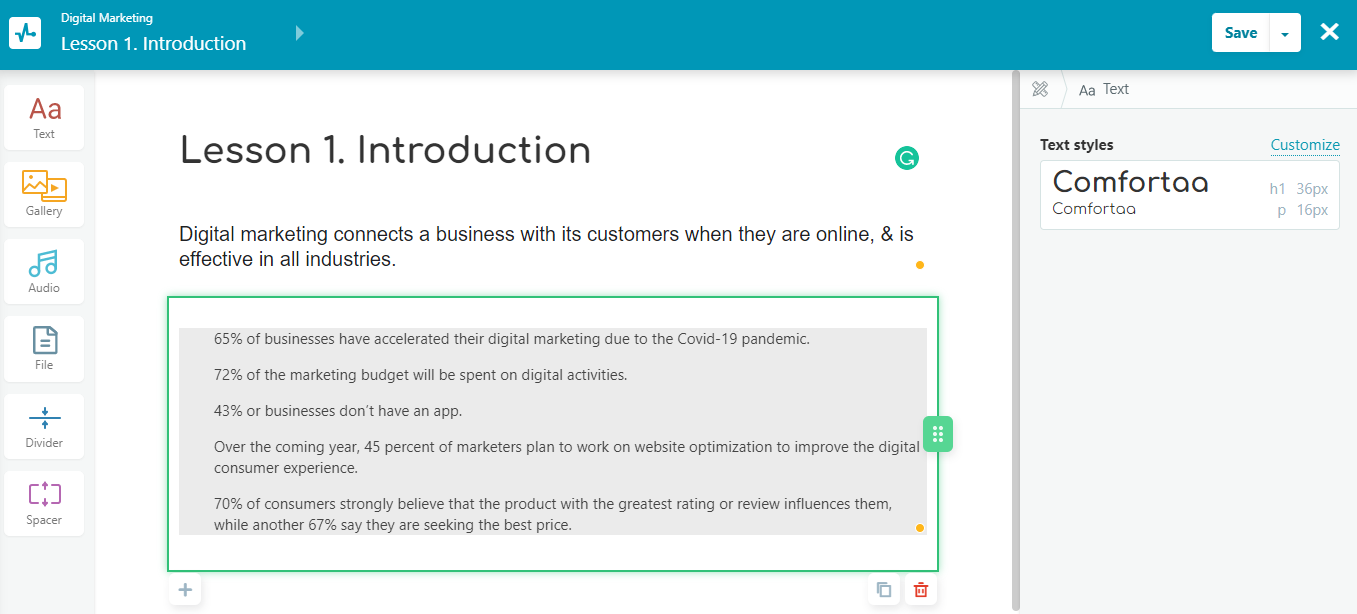
Free plan: 200 students, 3 courses, 1 instructor, and 1 GB of storage space.
Paid plan: From $42 per month for 1,000 users.
LearnWorlds
LearnWorlds helps you create lessons for online schools and courses. The platform allows you to set a time zone and select your school’s template (customer education, coaching, art & design, healthcare, fitness, etc.). When working with LearnWorlds, you can choose the number of students, topic, role, and access type of your course.
LearnWorlds opens new opportunities for those who use videos in their online courses. You can extract and provide the video transcript to increase students’ understanding of the topic. Better yet, you can ask your learners if they have questions and interact with them. Afterward, your instructors can add your questions to test students’ knowledge and share links to valuable materials. You also have a chance to check the statistics to figure out how students react to your videos and interact with them.
The platform’s course player is flexible and customizable. You can choose how students navigate your online course: freely or sequentially. It’s also up to you to decide when to deliver your course to users. LearnWorlds helps students memorize materials fast by providing some space for their notes.
Once students complete a lesson, section, or the whole course, you can test their knowledge and skills with quizzes, tests, and assignments. With LearnWorlds, you’ll develop tests and connect them to specific lessons and sections. You’ll be able to provide students with personalized digital certificates once they complete your course.
Below you can see how to create the first lesson with LearnWorlds.
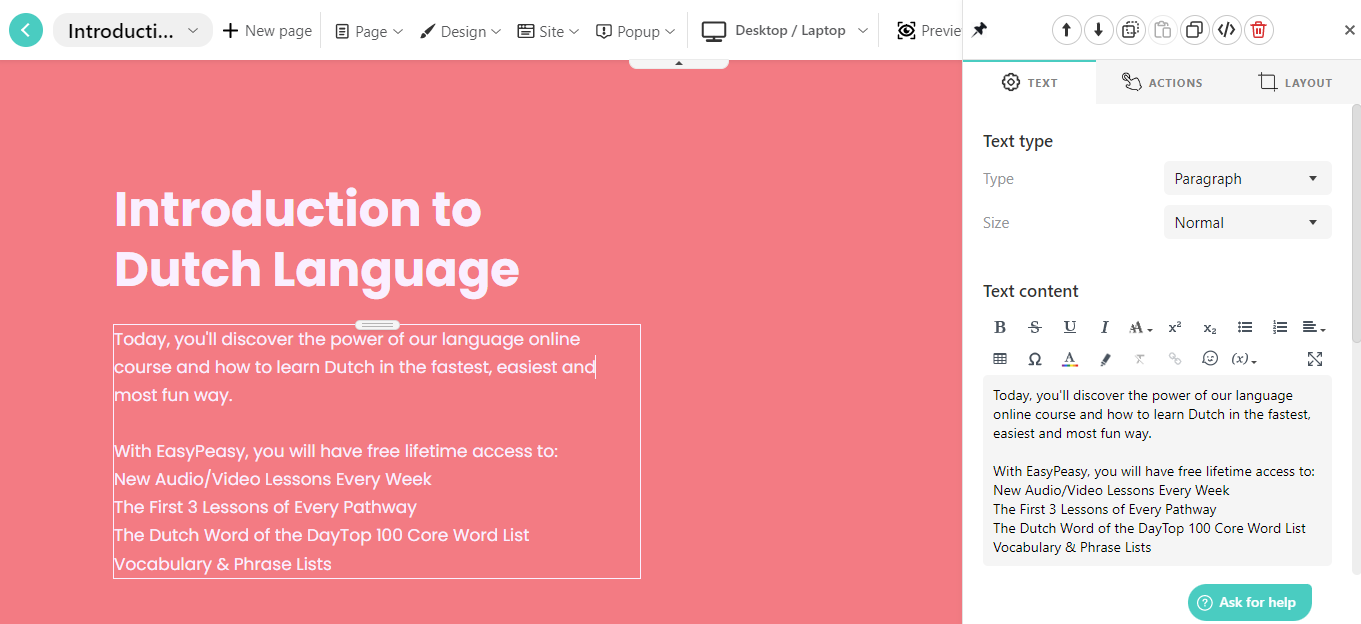
Free plan: 30-day free trial.
Paid plan: From $29 per month + $5 fee per course sale.
Teachable
Teachable is a mix of a course builder and a product promotion platform. Its drag and drop builder will help you design online training programs for employee onboarding, online schools, and coaching businesses. Once you finish developing your course, you can build a customizable sales and checkout page to sell the course and get paid fast.
An intuitive drag and drop builder allows you to design self-paced, cohort-based, and live coaching courses. Teachable enables you to organize your materials into an interactive and engaging online learning process. You can add quizzes, tests, and assignments after each lesson and let students collect more points. This way, you’ll be able to encourage them to demonstrate their knowledge and receive higher points. The platform empowers you to work on your course in a team. You can add instructors to help you develop your course, quizzes, and certificates of completion.
If you have a paid plan, consider creating a custom domain. This unique name for your site will help students recognize your course on the spot. The platform also offers you to integrate various useful solutions that will help you with promotion and communication. The list includes MailChimp, Zapier, ConvertKit, Google Analytics, Segment, and others. With Teachable, you’ll easily receive payments from students. The platform supports payments in different currencies via PayPal, Apple Pay, and Google Pay.
Teachable offers ready-to-use course templates to speed up the process of development. You can also design your course from scratch: add videos, audio recordings, texts, quizzes, and files. Once you do it, the course will look more attractive to students and catch their attention. Moreover, you can add upsells. With their help, you can sell your coaching sessions during your lessons. After students finish the course, you’ll be able to design and distribute certificates of completion.
Below you can see how to create a lesson in Teachable.

Free plan: Unlimited students, 1 course, 1 admin user, unlimited coaching services.
Paid plan: From $39 per month for unlimited students and courses, 2 admin users, and a custom domain.
Now that you know which microlearning platforms can be a good choice for your digital product, it’s time to jump into the best practices. They’ll give you a hint on how to get off to a great start with microlearning and provide a seamless student experience.
6 Microlearning Best Practices
Desire isn’t enough to help your students obtain new knowledge, skills, and professions — you need a unique approach and effective methods. In this section, we’ve covered some of the best microlearning best practices for you to consider.
- Determine your target audience. Before creating new content and delivering it to students, consider conducting thorough research. You should know the needs, pain points, and characteristics of your target audience. This step is necessary to provide learners with relevant and valuable materials.
- Ensure mobile-first design. Since the number of mobile users now amounts to 7.26 billion, there’s an urgent need to ensure that users can manage their eLearning process using smartphones and tablets. It will help you increase the number of your online course participants and improve satisfaction. Mobile-first design implies speeding up your webpage load time, creating a convenient navigation bar, and ensuring vertical orientation and mobile-friendly design. Build easily digestible and short lessons, and use responsive formats.
- Add visual content. According to statistics, 65% of students are visual learners. Graphs, images, and infographics influence the effectiveness of learning and help students digest information better. People store visually presented information in their memory longer than plain text or an audio recording.
- Leverage multiple channels. You need to consider using multiple media to reach different types of learners (visual, auditory, reading, and kinaesthetic). Prepare different content formats for each channel, such as podcasts, images, videos, presentations, PDFs, etc. As a result, everyone will find a suitable medium and perceive and memorize information in their unique way.
- Design interactive lessons. Interactive learning enables you to engage with the audience and build relationships with your students. Learners can communicate with each other and share their knowledge and understanding of the topic. They can also apply their critical thinking during practical tasks.
- Provide a personalized experience. Your online course can’t be a solution for all, so tailor it to your students’ individual needs. After completing your online course, learners should get the knowledge and skills they came for. You can help students attain their primary goals by implementing branching. Before students take your course, ask about their needs. Then, provide different learners with different versions of your course based on their preferences. For instance, if you sell an online course about social media marketing, you can offer multiple branches: Instagram marketing, Facebook marketing, influencer marketing, YouTube marketing, etc.
Now you know what microlearning is and why it’s essential. With our list of platforms and best practices for microlearning, you’ll be able to optimize the process of eLearning and make it more pleasant for your students.
References:
- This article defines the term and unveils how microlearning works.
- In this article, you’ll find the benefits, challenges, examples, and best practices of microlearning.
Last Updated: 06.09.2023


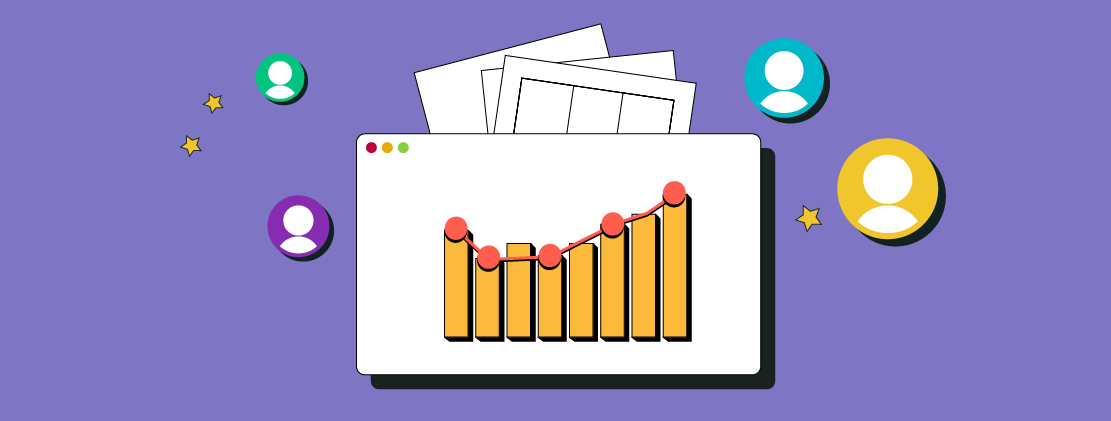
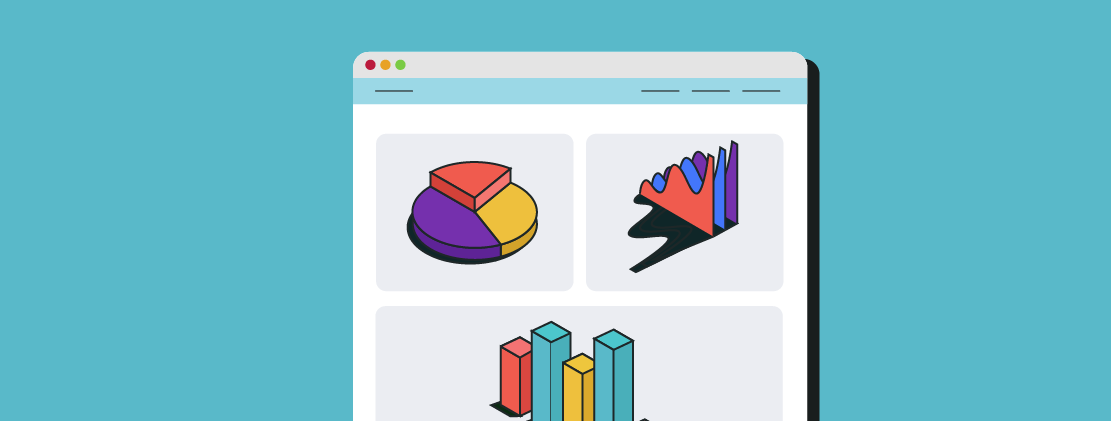

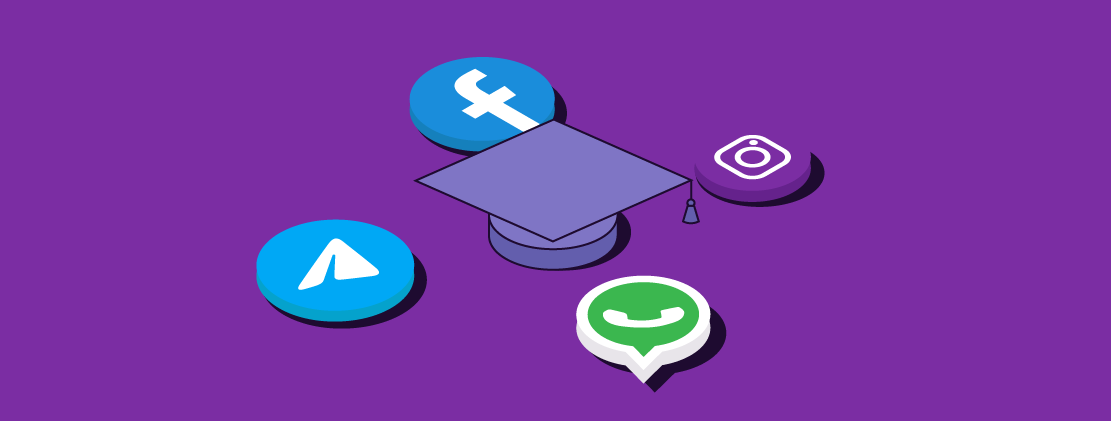

or